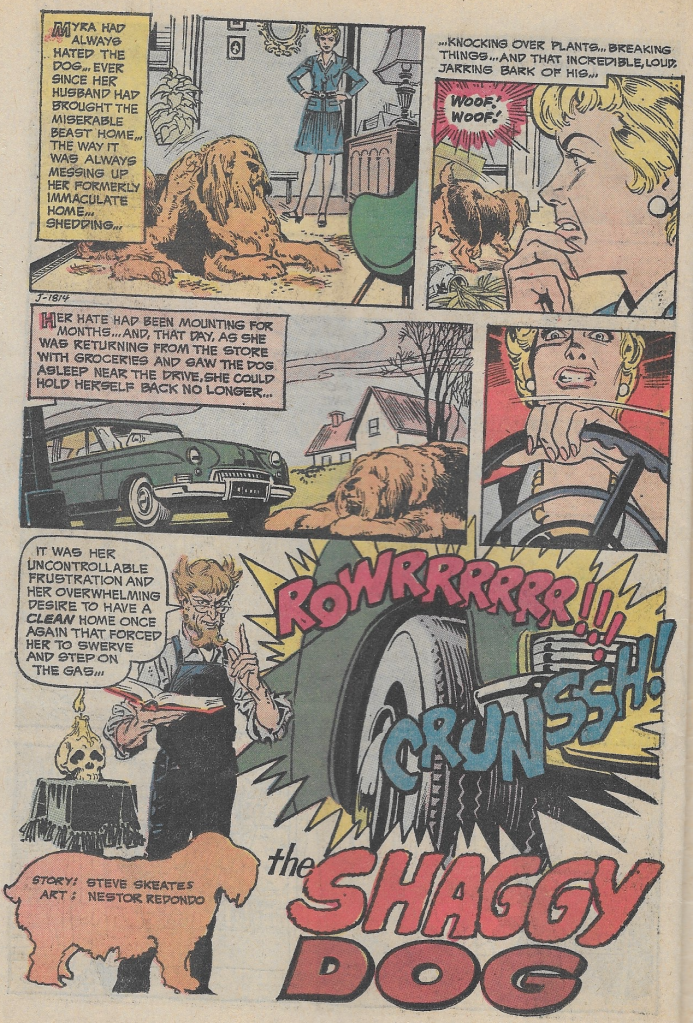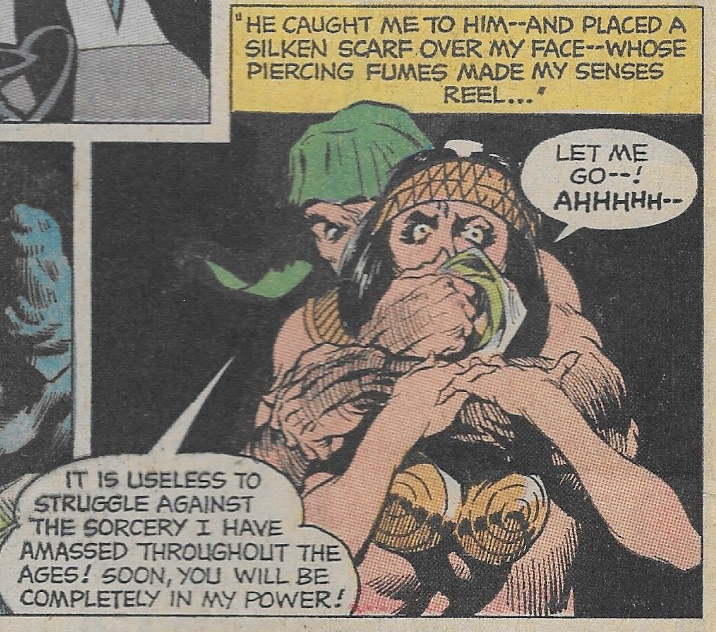Ever since the medium began in the 1930s, comic books have had transformation stories. Maybe not at first. The earliest comic books, Funnies on Parade and Famous Funnies, reprinted comic strips from newspapers. Then, in 1935, New Fun, New Adventure, and Detective Comics would appear and they may well have had stories involving transformations. (Detective Comics‘ initials would later give its publisher the name DC Comics.) And, in 1938, the first issue of Action Comics would give the world Superman and the first appearance of the magician Zatara, whose genuine magic powers he would pass on decades later to his better-known daughter, Zatanna, who has been responsible for some transformations in her time.
As the medium continued, more transformations came along. There were the characters for whom transformation into their super-powered alter-egos were a big part of their series, such as Billy Batson into the original Captain Marvel (now Shazam!) or Dr. Robert Bruce Banner into The Hulk.
But there were also stories, stand-alone one-shots,which involved transformations. Most of these were in the horror anthologies of the time, House of Mystery, House of Secrets, The Witching Hour, Tales of the Unexpected/The Unexpected could be found at DC alone. Especially in the 1970s, after DC had abandoned their science-fiction anthologies and using such titles for super-folk. (House of Mystery devoted several issues to a great transforming hero, Robby “Sockamagee!” Reed in “Dial H for Hero”)
I followed a lot of the anthologies, looking for decent transformation stories, though many of them were not to my liking. I’m fussy about my transformation stories, and, one problem with many TFs in the comics is that the transformed doesn’t survive the change. I remember one story in which a wicked sailor is turned into a king crab, his tattoo prominent on the crab’s claw. I believe the crab was smashed and its shell cracked. Another story had a lady herpetologist testing an anti-venom cure on herself, which turned her into a snake. She was then tossed into a pit of test snakes, and bitten by several venomous species. There was a teacher telling his students that there was no such thing as magic while one student’s witchy relative turned the teacher into a frog. The boy, at the end of the story, talked about learning how to dissect a frog. I don’t like such stories because I consider death the easy way out of transformations. I prefer the transformed to live and deal with his or her change.
What follows are overviews of two comic-book transformation stories that I do like.
The first is from House of Mystery No. 264, cover dated June 0f 1973. This was the cover:

This cover was by Berni Wrighton, more about whom will come along in this posting.
The story I’m referring to is “The Shaggy Dog” (how’d DC keep Disney from learning about THAT title?), a six-pager by Steve Skeates with art by Nestor Redondo. The story is about Myra, a neat-freak housewife who does her best to keep her home spotless, and she considers her husband’s dog, Morgan, to be the biggest problem to her efforts. So she starts the story with a solution to the problem.

She covers up her deeds, and goes back to having a spotless home. But then, she experiences — problems.

And more problems.

She started to lose it, diving at the hairs, and trying to pull them up while sitting in manner kind of reminiscent of — something.

Her house wasn’t CLEAN anymore!

But then, SHE wasn’t spotless either — though you could say that she was now SPOT!
At this time, Cain was billed as the caretaker for the House of Mystery. It would be not quite two decades before Alan Moore established that Cain was THE Cain and his brother, Abel, caretaker of the House of Secrets, was THE Abel, and the former was cursed to kill the latter over and over again for eternity. The brothers there became regulars in Sandman and The Dreaming.
The other story is from House of Mystery No. 186, cover dated 1970. I had to settle on a fair/good copy of this, because a near-mint copy can run about $1500. Part of the reason for this is the cover.

This cover is by Neal Adams, who, about this time, was establishing himself as THE Batman artist, He would later illustrate the classic DC Collector’s Edition Superman vs. Muhammed Ali. Adams also drew the story accompanying this cover, about a statue of Pan coming to life.
But what I’m interested in is the other story in this comic, illustrated by Berni Wrightson. It would be another year before Wrightson, with Len Wein, did the story that would introduce to DC Comics the concept of Swamp Thing. But Wrightson had done some stories for DC, including this story.
It starts with Caretaker Cain going out to investigate a cat.

As I’ve said before in this blog, I’m not normally a fan of woman-to-cat transformations. They’re such a cliche. But that doesn’t mean I can’t appreciate those cat/woman stories that rise above the rest. This is one of them, as we learn its its splash pages, which give us a jaw-dropping cat-to-woman transformation.

We learn the cat is actually an Egyptian priestess, Isha, charged with caring for a temple to a cat god. But the story’s villain falls in lust with the priestess and isn’t going to let a little thing like potential blasphemy get in the way of his desire.

After coming back and slaying the guards, the badd guy applies a powerful potion to there priestess’ face, which leads —

— to maybe the BEST woman-to-cat step-by-step transformation I’ve ever seen!

Although, one has to wonder why a woman should be so alarmed about being turned into a cat when she serves a cat-god.
The woman and the sorcerer spend millennia together, never aging,while the sorcerer does everything he can to torment his “love,” including disposing of a potential cat-rival.

But, finally, the priestess manages to put together an antidote that returns her to her man state — and another that transforms the sorcerer in a way that enables her former cat-friends to avenge her and her dead lover.

I don’t mind stories where a transformed person is killed if the death is the serving of justice.
There are other comic-book stories involving transformation that I like. And I do plan to share in the future.
It would seem I should be collecting House Of Mystery
LikeLike
I should mention that there is a House of Mystery collector’s edition which reprinted the “Egyptian Cat” story. This is an oversized comic book, about the size of an old Life magazine. You can find some that are a little cheaper than the original HOM No. 186.
LikeLike